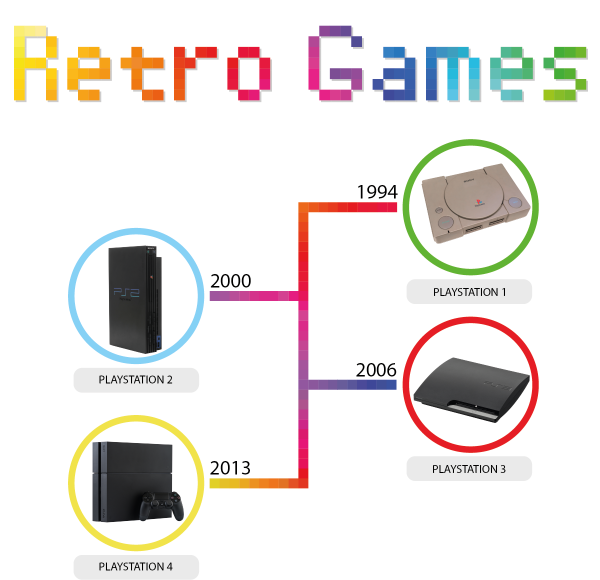The development of PlayStation dates back in 1988 after Sony and Nintendo formed a partnership to develop the Super Disc. Nintendo had become a dominant player in the gaming industry following the 1983 video market crash. It had continued developing add-ons for Super Nintendo Entertainment, including a temporary modem that was released in Japan. Sony, on the other hand, focused on it main strength and had invented CD-ROM/XA alongside Philips Electronics. The disc allowed users to run video, audio and graphics simultaneously.
Initially, CD-ROM contained audio, graphics and data. As such, the development of a disc that could run all the features independently was a significant milestone by Sony. It was the announcement of this new technology that prompted Nintendo to approach Sony for a partnership with the intention of developing a CD-ROM add-on to Super Nintendo. The deal was closed in 1988 where Sony was supposed to supply the technology while Nintendo released the Play Station expansion.
A dispute ensued soon after that caused Nintendo to approach Philips Electronics privately for help to develop a different kind of disc and cancelled the initial agreement with Sony. Despite this setback, Sony moved on to introduce a modified version of the Super Disk in 1991 as part of its new game console called Sony PlayStation. Prior to the release of the PlayStation, console games were based on cartridges, which were pretty expensive to develop and took long manufacturing cycles.
The invention was greatly boosted by the appointment of Ken Kutaragi as the Sony’s head of developing the PlayStation project. After intense research and development, Sony PlayStation was unveiled in 1991 at the Consumer Electronics. Nintendo announced its plans to use Philips’ technology the next day. The ongoing dispute created tremendous pressure on Kutaragi to develop the Playstation further in a bid to beat Nintendo. Since most of Sony’s executives opposed the new project, Kutaragi and his team shifted to Sony Music to retain the PlayStation project and relationships with Philips.
Initially, Sony was uncertain as to whether to use 3D or 2D polygon graphics when developing the PlayStation. It was only after the successful sale of the gaming software Virtua Fighter by Sega in Japan that Sony became convinced to use 3D polygon graphics in their consoles. In 1994, Sony released its first original PlayStation. It only played CD-ROM based games and was not compatible with game cartridges from Nintendo.
The console featured a slim build with a grey coloured layer and a PSX joypad that offered more control compared to Sega’s console Saturn. Over 300,000 units of PSX were sold during the first month of sales in Japan. It was later introduced in the United States in 1995 where it pre-sold 100,000 units before the official launch. Sony has since developed other versions of the PlayStation.
 The PS One was released in 2000 along with its successor – the PlayStation 2. PS One was a modification of the original PlayStation as it had a smaller design. Despite being released in the same year as its successor, the PS one outsold the other consoles during that year. The developer’s decision to incorporate a home menu GUI and use a smaller build prompted the surge in the sale of the PS one that year.
The PS One was released in 2000 along with its successor – the PlayStation 2. PS One was a modification of the original PlayStation as it had a smaller design. Despite being released in the same year as its successor, the PS one outsold the other consoles during that year. The developer’s decision to incorporate a home menu GUI and use a smaller build prompted the surge in the sale of the PS one that year.
 It was released in 2000, a year before its rival Nintendo developed GameCube. PlayStation 2 featured a much slimmer design than previous versions and was compatible with older systems like the DualShock controller. This video game console is said to be the best selling console of all time, having sold more than 155 million units. In 2004, Sony introduced lighter versions of the console called the Slimline model. Slimline was thinner, smaller and quieter than the PlayStation 2 and was fitted with a built-in Ethernet port. Four years later, Sony reinvented Slimline to introduced a much lighter version. The company achieved this by making an internal redesign that incorporated the power supply into the device.
It was released in 2000, a year before its rival Nintendo developed GameCube. PlayStation 2 featured a much slimmer design than previous versions and was compatible with older systems like the DualShock controller. This video game console is said to be the best selling console of all time, having sold more than 155 million units. In 2004, Sony introduced lighter versions of the console called the Slimline model. Slimline was thinner, smaller and quieter than the PlayStation 2 and was fitted with a built-in Ethernet port. Four years later, Sony reinvented Slimline to introduced a much lighter version. The company achieved this by making an internal redesign that incorporated the power supply into the device.
 It was released in 2006 and was the first console to use motion-sensing technology. PlayStation 3 is a high-definition console that incorporated a Blu-ray Disc player. Initially, the device was fitted with a 60 GB hard drive but was later upgraded to 500 GB. A slim model for the PlayStation 3 was also released in 2009. It was 36% smaller, consumed 34-45% less power, 36% lighter and had a modified cooling system. The company later redesigned the console and produced a Super Slim Play Station 3. It was 3 pounds lighter than the slim model and came with a 250 GB, 500 GB hard drive or 12 GB flash memory.
It was released in 2006 and was the first console to use motion-sensing technology. PlayStation 3 is a high-definition console that incorporated a Blu-ray Disc player. Initially, the device was fitted with a 60 GB hard drive but was later upgraded to 500 GB. A slim model for the PlayStation 3 was also released in 2009. It was 36% smaller, consumed 34-45% less power, 36% lighter and had a modified cooling system. The company later redesigned the console and produced a Super Slim Play Station 3. It was 3 pounds lighter than the slim model and came with a 250 GB, 500 GB hard drive or 12 GB flash memory.
It is commonly known as the PS4 and was announced in 2013. The PS4 is among the latest video game consoles from Sony Company. It was  then that Sony introduced the PlayStation app to allow PS4 users to convert their smartphones and tablets to second screens and enhance gameplay. Subsequent versions of the PS4 include the slim model that was released in 2016. It was 40% smaller and had a round design with a matte finish at the top instead of a two-tone finish.
then that Sony introduced the PlayStation app to allow PS4 users to convert their smartphones and tablets to second screens and enhance gameplay. Subsequent versions of the PS4 include the slim model that was released in 2016. It was 40% smaller and had a round design with a matte finish at the top instead of a two-tone finish.
A pro model of the PS4 was later unveiled in 2016. It was a modified version of the original model that features an upgraded GPU and hardware and a higher CPU clock. The PS4 Pro was primarily designed to allow users to play specific games on 4K resolution while improving the quality of the PlayStation VR. Games on the PS4 and PS4 Pro are compatible backwards and forward.
The year 2018 will also see the launch of a miniaturised version of the original PlayStation Console. Sony is set to launch the Classic Mini on 3rd December 2018, which is the same day the company released its first console. The Classic Mini features 20 built-in games and is 45% smaller than the first version. It has an HDMI cable for users to plug into modern TV sets and comes with two miniature replicas of divided controllers. The console also has a virtual memory card that allows players to save games without using the conventional memory devices packaged in older models.

The history of the Playstation console. Source: retrogames-online.com